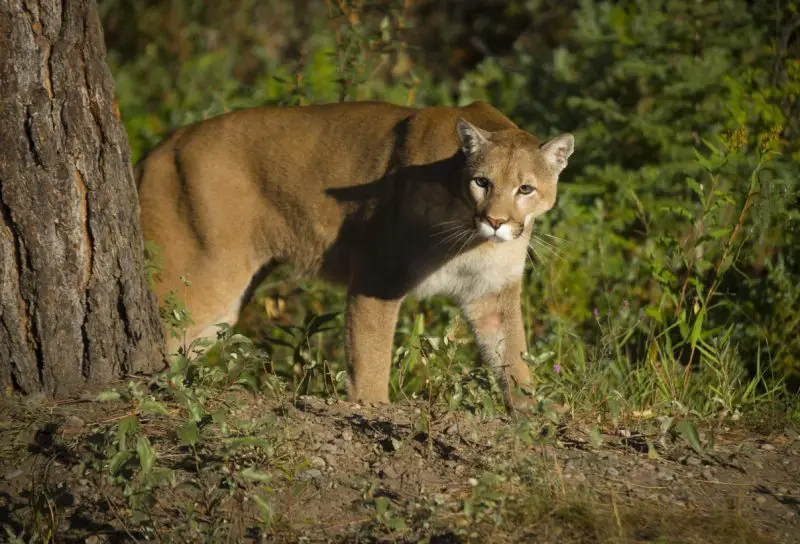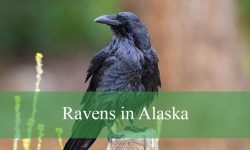Mountain lions, also known as cougars, pumas, or panthers, were once native to North Carolina’s forests, mountains, and river valleys. These large carnivores served as apex predators, helping maintain the balance of ecosystems by controlling populations of deer and other prey species. Their presence shaped the natural environment and played a crucial role in the state’s wildlife history.
Today, the existence of mountain lions in North Carolina is highly debated. While there are occasional reports of sightings, no verified evidence confirms a breeding wild population. To better understand these elusive animals, it is important to explore their physical characteristics, behavior, hunting strategies, habitats, and other intriguing facts that reveal how they once thrived in the region.
Physical Characteristics and Identification

Mountain lions are sleek, muscular felines with bodies designed for strength and agility. Adults measure between 3.25 and 5.25 feet in body length, with tails adding an additional 2 to 3 feet. Males are generally larger and heavier than females, allowing them to dominate territories and hunt efficiently. Their fur is typically tan or tawny, with lighter underbellies and subtle facial markings around the eyes and mouth. The rounded ears and long, thick tail, often ending in a black tip, give them a distinctive silhouette.
Mountain lions have retractable claws, so tracks rarely show claw marks, which helps distinguish them from bobcats, coyotes, or black bears. Their eyes have a reflective layer, providing excellent night vision for hunting in low-light conditions. These physical traits make them formidable predators capable of stealth and sudden bursts of speed.
Size and Strength
Mountain lions are among the largest wild cats in North America. Males can weigh between 115 and 220 pounds, while females range from 64 to 141 pounds. Their muscular legs and flexible bodies allow them to jump over 40 feet horizontally and 15 feet vertically. These abilities make mountain lions effective hunters in both forests and mountainous terrain.
Despite their size, mountain lions can move silently, allowing them to approach prey undetected. Male mountain lions often have broader chests, thicker necks, and larger heads than females, providing strength during hunting and territorial disputes. Their combination of speed, endurance, and stealth makes them efficient predators capable of taking down prey much larger than themselves.
Behavior and Lifestyle
Mountain lions are solitary and territorial animals. Each adult maintains a home range that can span 50 to 200 square miles, depending on prey density and habitat quality. They are primarily nocturnal, being most active during dawn, dusk, and nighttime. This behavior helps them avoid human encounters and improves hunting success.
Communication occurs through vocalizations, scent marking, and visual signals. Mountain lions are generally silent but can emit screams or growls during mating or when threatened. Females raise their kittens alone, teaching them to hunt and survive. Kittens are born with spotted fur, which gradually fades as they grow, remaining dependent on their mothers for several months before establishing independence.
Diet and Hunting Strategies
Mountain lions are apex predators that feed primarily on medium- to large-sized mammals, with deer being their main prey. They rely on stealth and ambush techniques rather than chasing prey over long distances. Mountain lions often stalk prey quietly through dense vegetation before pouncing and delivering a fatal bite to the neck or head.
In areas where deer populations are low, mountain lions adapt by hunting smaller mammals, birds, or occasionally livestock. They may cache leftovers under vegetation, returning later to feed while minimizing competition from scavengers. Through these hunting behaviors, mountain lions play a vital role in regulating herbivore populations and maintaining ecosystem balance.
Habitat and Range in North Carolina
Historically, the Eastern cougar (Puma concolor couguar) was native to North Carolina. They inhabited dense forests, river valleys, and mountainous regions such as the Appalachians. These areas provided cover for stalking prey and easy access to water sources. Today, habitat fragmentation caused by urban development and agriculture has greatly reduced suitable cougar territory.
Although occasional sightings are reported, the North Carolina Wildlife Resources Commission (NCWRC) confirms that there is no breeding population. Most reports are later determined to involve bobcats, coyotes, black bears, or escaped captive animals. Nevertheless, historical records show that mountain lions were once widespread throughout the state.
Fun Facts About Mountain Lions
Mountain lions have remarkable adaptations that make them unique predators. They can leap vertically and horizontally with incredible precision, move silently through forests, and use their tails for balance and communication. Their vocalizations, including eerie screams during mating season, are often mistaken for human sounds. Unlike African lions, mountain lions are solitary, maintaining strict territories instead of living in social prides. Their agility, strength, and stealth have allowed them to thrive across the Americas for thousands of years, making them symbols of wilderness and power.
Conservation Status and Challenges
The Eastern cougar is officially considered extinct in the wild. Factors contributing to their disappearance in North Carolina include habitat destruction, hunting, and a decline in prey species such as white-tailed deer. Today, conservation efforts in the eastern United States focus on the Florida panther (Puma concolor coryi), the only breeding population of cougars east of the Mississippi River. Protecting habitat corridors, reducing human-wildlife conflict, and preventing vehicle collisions are essential for conserving these endangered predators. While mountain lions no longer roam freely in North Carolina, their historical presence remains important for understanding the region’s natural heritage.
Sightings and Misidentifications
Reports of mountain lions in North Carolina continue, but investigations often reveal misidentifications. Black bears, especially those with melanistic coloration, may appear as “black panthers” from a distance. Bobcats, coyotes, and escaped captive cougars are also frequently mistaken for wild mountain lions. The NCWRC encourages residents to report sightings, but most claims do not indicate a wild population. Verified evidence, such as photographs or DNA samples, is lacking, confirming that mountain lions are functionally extinct in the state.
Safety and Awareness
Although mountain lion encounters in North Carolina are extremely rare, it is important to know how to respond. People should avoid running, as sudden movement may trigger a predatory response. Maintaining eye contact, appearing large, and slowly backing away are recommended. Keeping children and pets close and reporting sightings to wildlife authorities ensures both human safety and accurate monitoring of potential risks. These guidelines mirror safety recommendations from western states where mountain lions remain common.
Conclusion
Mountain lions once thrived across North Carolina, inhabiting forests, river valleys, and mountains. Today, the Eastern cougar is extinct in the wild, and reported sightings are typically misidentifications or involve escaped captive animals. Studying their physical characteristics, behavior, hunting strategies, and habitat preferences provides insight into their historical role as apex predators. While mountain lions no longer roam freely in the state, their legacy remains in stories, place names, and the conservation efforts dedicated to protecting other predators in the eastern United States
FAQs About Mountain Lions in North Carolina
Are mountain lions still found in North Carolina?
Mountain lions, specifically the Eastern cougar, are officially considered extinct in the wild in North Carolina. While there are occasional reports of sightings, these are generally misidentifications of other animals such as bobcats, black bears, or coyotes. There is no verified evidence of a breeding population in the state. Wildlife authorities continue to monitor reports, but confirmed mountain lion activity in North Carolina remains nonexistent.
What do mountain lions in North Carolina look like?
Mountain lions are large, muscular cats with tan or tawny fur and lighter underbellies. They have rounded ears, long tails with black tips, and subtle facial markings around the eyes and mouth. Adult males are larger than females, weighing between 115 and 220 pounds, while females weigh between 64 and 141 pounds. Their powerful legs allow them to leap great distances and move silently, which historically made them effective predators in North Carolina’s forests and mountains.
What kind of habitat do mountain lions prefer?
Historically, mountain lions in North Carolina lived in dense forests, river valleys, and mountainous regions such as the Appalachians. They preferred areas with abundant prey and cover for stalking, as well as proximity to water sources. Today, human development and habitat fragmentation have eliminated most of these suitable territories. Although mountain lions were once widespread, their habitats are now heavily altered, preventing a viable wild population from existing.
What do mountain lions eat?
Mountain lions are apex predators that primarily hunted medium- to large-sized mammals. In North Carolina, their main prey historically included deer, raccoons, rabbits, and smaller mammals. They relied on stealth and ambush techniques rather than long chases. Mountain lions were also known to cache leftover food under vegetation, returning to feed later while minimizing competition from scavengers. Their predation helped regulate herbivore populations and maintain ecological balance.
How do mountain lions behave?
Mountain lions are solitary and territorial animals. Each adult maintains a home range that can extend up to 200 square miles depending on prey density. They are primarily nocturnal, being most active during dawn, dusk, and nighttime hours. Females raise kittens alone, teaching them to hunt and survive independently. Communication occurs through scent marking, vocalizations, and visual signals. While generally silent, mountain lions can emit loud screams or growls during mating or when threatened.
Can mountain lions be dangerous to humans in North Carolina?
Encounters with mountain lions in North Carolina are extremely rare due to their absence from the wild. However, understanding how to respond is important for safety. If someone were to encounter a mountain lion, experts recommend maintaining eye contact, appearing large, speaking firmly, and slowly backing away. Running or turning your back may trigger a predatory response. Keeping children and pets close is also crucial. These precautions are consistent with safety guidelines in western states where mountain lions are present.
Why are there occasional mountain lion sightings in the state?
Most reported sightings are misidentifications. Black bears, especially those with melanistic coloration, may appear as “black panthers” from a distance. Bobcats, coyotes, and escaped captive cougars can also be mistaken for wild mountain lions. Some sightings involve old tracks or livestock predation that are incorrectly attributed to cougars. Wildlife authorities investigate these claims but emphasize that verified evidence is lacking, confirming that mountain lions are functionally extinct in North Carolina.
What is being done for mountain lion conservation in the eastern United States?
While mountain lions are extinct in North Carolina, conservation efforts focus on the Florida panther, the only breeding population of cougars east of the Mississippi River. Protecting habitat corridors, preventing vehicle collisions, and reducing human-wildlife conflict are key strategies. Research on historical populations, including those in North Carolina, helps inform management practices and raises awareness about the importance of preserving apex predators in eastern ecosystems.






